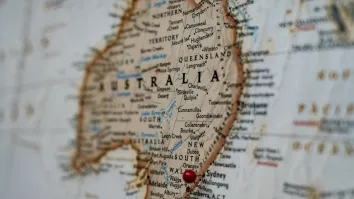
APAC banks face time bomb of risks amidst new climate change policies
Those who drag their feet when it comes to ESG compliance face a future of impairments, reputational damage.
Banks in Asia-Pacific must step up their ESG compliance as climate change and related government policies expose them to an array of new risks, both financial and reputational.
New standards and regulations will increase compliance costs for banks, whilst engaging in or facilitating activities with a significant negative environmental impact can inflict reputational damage on banks and tarnish their brands, reports Moody’s Investors Service.
"Asia-Pacific economies with weak infrastructure are particularly vulnerable to physical climate risks, which can hurt banks' asset quality because a natural disaster can damage borrowers' assets or disrupt their cash flow. Many banks in the region also face asset risks from large exposures to sectors susceptible to carbon transition risks," says Alka Anbarasu, a Moody's vice president and senior credit officer.
Climate change is altering the cost-benefit analysis of banks’ lending and investment options, increasing compliance costs for banks and exposing lenders to the risk of fines or litigation in the event of noncompliance.
For example, Anbarasu notes a study published in 2017 by International Renewable Energy Association, which estimates that between 25% up to 45% of Chinese and Indian power generators’ assets by value could become stranded by 2030. This, in turn, would lead to impairments of banks' exposures to such borrowers.
Despite the time bomb of impairments creeping closer towards d-day, only a few large banks in Australia, Korea, Japan, Singapore and Malaysia, as well as foreign banks with large operations in the region—notably Standard Chartered and HSBC—currently prohibit financing new coal-fired power plants. Banks in the rest of the region are even more exposed to this time bomb of impairments as they have yet to clearly articulate such policies.
Other carbon-intensive sectors include coal mining; oil and gas; diesel-intensive transportation and logistics; and production of steel, chemicals and building materials. Banks in emerging economies in Asia, such as China, Bangladesh, India, Indonesia, Philippines and Vietnam, have material exposures to these sectors.
Lenders to palm oil plantations in Malaysia and Indonesia also need to seriously rethink their exposure to the sector, as they could face defaults by producers that lose business because of heightened global scrutiny on deforestation by the industry.
Scrutiny in this area is already underway. In 2016, the IOI Corporation Berhad, a large Malaysian palm oil producer, lost several customers because the Roundtable on Sustainable Palm Oil suspended certification of the company. This is in response to complaints filed by environmental organizations, which criticized IOI for clearing peatlands in Indonesia. Whilst the company's certification has since been restored, small producers in Malaysia and Indonesia continue to face similar risks.
Amongst banks in the region, large, diversified banks in the developed economies of Singapore, Australia, and Japan, along with major pan-Asia Pacific banks, are the ones better positioned to cope with climate risks and preserve credit strength.
“Their exposures are more diversified across different countries and industries, reducing their vulnerability to climate risks from a single location or borrower group,” Anbarasu said. “What's more, they have started incorporating climate factors into their strategic plans and operations as they face pressure from stakeholders to take steps early.”
Legal, reputation risks
Legal and reputational risks are also on the rise for banks in the region, as governments advance guidelines and regulations for sustainable financing and disclosure requirements related to climate risks.
Banks face the challenge of complying with these regulations as they are expected to be inconsistent and even conflicting from country-to-country, said Anbarasu. And should lenders fail to comply, they risk getting fined or facing litigation.
Investors themselves are increasing pressure on banks to stop financing carbon-intensive projects.
“At the same time, shareholders and lobbying groups are increasingly pushing businesses toward sustainable growth, and a failure by a company to satisfy their demands can directly lead to legal consequences, hurt its reputation or both. This is a substantial risk for banks,” Anbarasu warned.
The new frontier
Despite these new risks, heightened awareness on sustainability and ESG factors have created fresh financing opportunities for financial institutions.
Bank lending will be the largest source of funding for clean energy projects that will require enormous amounts of investment, Moody’s said in its report.
“Asia-Pacific countries' pledged commitment to the goals of the Paris Agreement for 2030 and their net zero emissions targets will create opportunities for banks to boost lending because the new government policies will require enormous amounts of investment in clean energy and efficient infrastructure, with bank lending to be the largest source of funding for such projects,” the ratings agency said.
Demand for funding will rise as countries amp up their sustainability-related ambitions. In China, policymakers in the country have outlined goals to reduce the share of fossil fuels in its total energy mix to less than 20% by 2060 from the current 80%, as the government seeks to achieve net zero carbon emissions in forty years’ time.
Whilst banks in the country currently have large exposures to carbon-intensive assets, some have responded to the government's call with ambitious targets to double green loans in the next five years in expectation for increased demand.
In fact, green loans in China grew 24.6% as of 31 March 2021 compared to a year earlier, to make up more than one in 10 or 11.2% of all corporate loans in the country.
Green finance will increase similarly in other countries in Asia as they seek to reduce the use of carbon-based fuels, Moody’s added.
India aims to increase the share of non-fossil fuels to 40% of installed electric power capacity by 2030 from 36.8% as of March 2021; whilst Indonesia is committed to using renewable energy sources for at least 23% of primary energy in 2025 from less than 10% in 2020.
Photo courtesy of Singkham from Pexels


















 Advertise
Advertise







